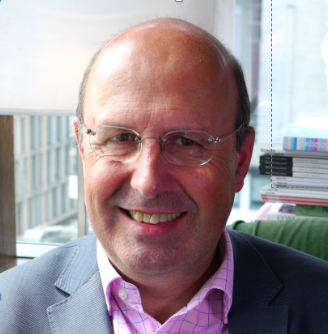You can sign up to our LinkedIn newsletter here.
What is the ‘Capability Attitude’ and why is it about ‘Build not Fix’? For senior professionals, whether as employees, interims or consultants, they are indoctrinated with the mantra: ‘don’t just bring me problems; bring me solutions’. Maybe earlier in their careers, they had an operational responsibility to consistently deliver a service whether internally or externally. But as leaders they are expected to bring change, and change is framed as finding what is broken and fixing it. Surely ‘if it’s not broke then don’t fix it’. Some far-sighted leaders may see the potential of using appreciative enquiry to find what is working well and then seek to build on it, but the dominant paradigm is still ‘find problem, fix problem’.
The Capability Attitude espouses a very different approach. The first step is to assess the level of mature of the capability in focus across a range of themes. The second step is to understand what the priorities are for the business in relation to each theme. The third step is to build up the capability so that it meet the needs of the business.
Sales and Marketing
I have been working with a very experienced senior professional who had got a lot of skill in building up the sales and marketing capability of businesses. But he was tempted to pitch for work with a ‘fix’ mentality.
This individual had two great opportunities: both well qualified; both for which the client really wanted his expertise. His default approach was to pitch to write a strategy, build a plan and provide high value advice as a consultant.
It was a big mental shift for him to see his primary role as building a relationship with the CEO. Through this relationship, he could show the CEO that what he needed more than anything else was the skills, knowledge and experience to build and sustain a capability over time. As a part-time commercial director, he would offer the CEO the insight that would shape the sales and marketing functions, align them to the development of product and customer service and enable the business to transform shareholder value.
For one of the opportunities, the owner of this business was looking to execute a transaction to release his minority shareholders in the short term and then sell the business in the next three to five years. In the context, the commercial function, the sales and marketing function, should be completely dedicated to maximizing shareholder value and making this business as attractive as possible to potential purchasers.
Given the nature of the business it’s probably going to be a trade sale. It will be important to assess whether the potential buyer is looking for access to clients and extension of its product portfolio or access to new geographies. Where is the real value they can build in the marketplace? The sales and marketing function must be shaped to maximise the sale value. Showing a pattern of increasing revenue will help. Demonstrating that gross margin is growing matters. However, on sale it will be the multiple of profit or EBITDA that will make the most difference. Doubling sales or profit in 5 years requires 15% uplift every year. Increasing the EBITDA multiple from two to four could be achieved by entering a couple of strategic new territories.
Photography
A similar instance was something I found with an individual who is a commercial photographer. On the face of it, it is difficult to see how that role could become a long running Portfolio Executive type relationship. Typically, a commercial photographer will come in and do a shoot around a particular thing, very project oriented. How could that transition into a long-term client relationship? Well, certainly you can be retained as the preferred supplier but that’s not really building long-term value with the client over time.
As I talked to this particular individual, an exciting opportunity emerged and in this particular case the opportunity was around being much more like a visiting artist or an artist in residence. Now you could bring that photographic endeavour into the organisation providing a range of different services on an ongoing basis. Whether that’s using it to create corporate art, whether it’s engaging clients, whether it’s building gifts for them or whether it’s engaging professionals within the organisation in various forms of creative activity.
Now we have an opportunity to shift essentially a contracted project-based relationship into an ongoing sustained relationship with a client, where you can bring value year in, year out.
Build a partnering relationship with an organisation and bring that artistic endeavour into the heart of everything they do.
Conclusion
The Capability Attitude is founded on the assumption that building long-term relationships and evolving the capability of a function to meet the priorities of the business is ultimately more fruitful than a series of short-term problem fixes. Too often a narrow fix can have the unintended consequence of exacerbating a related problem. Endless whack-a-mole can ensue. This is the systems dynamics of a ‘fix that fails’. A Capability Attitude encourages an iterative approach to systemic improvement which ultimately builds more value by embedding change in process, behaviour, values and, ultimately, culture.

Charles McLachlan is the founder of FuturePerfect and on a mission to transform the future of work and business. The Portfolio Executive programme is a new initiative to help executives build a sustainable and impactful second-half-career. Creating an alternative future takes imagination, design, organisation and many other thinking skills. Charles is happy to lend them to you.
